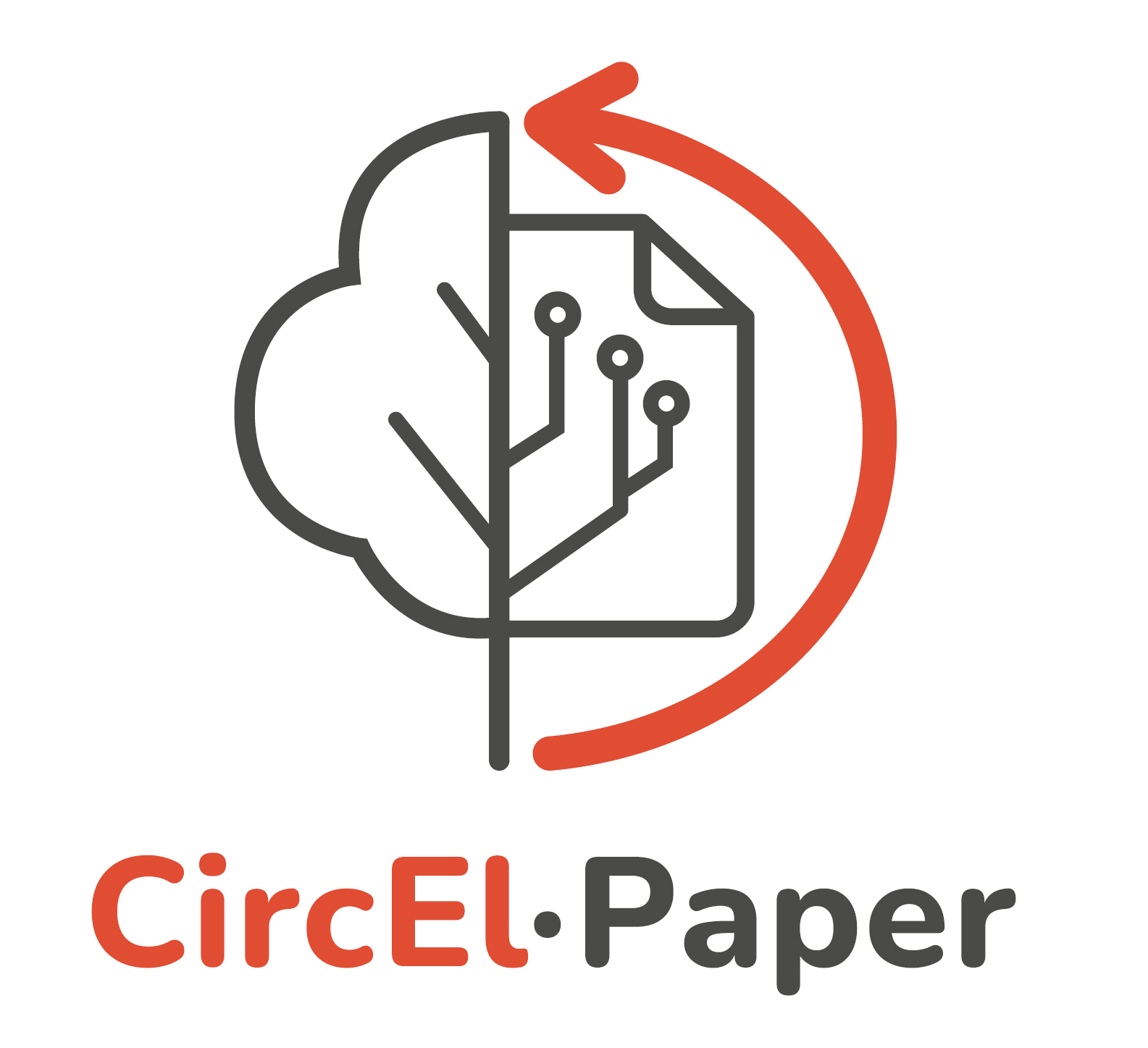
Motivation and Objectives
In almost any of the electronic products, electronic boards (PCB) are assembled that contain sensors, chips, capacitors, resistors etc. These boards consist of a prepreg (pre-impregnated) polymer (fibre enforced epoxy polymers) and circuitry based on copper. Besides, metals such Pd, Ag, Ni, Au etc and additional polymers (solder stop masks, dielectrics etc) are involved. Therefore, within a PCB a lot of different materials are used which causes difficulties for efficient recycling processes. The combination of low user acceptance of e-waste recycling and the difficulty to separate and recycle efficiently materials from electronic boards forms the motivation of CircEl-Paper:
IS IT FEASIBLE TO MODIFY PRINTED CIRCUIT BOARDS IN ORDER TO USE THE WELL-ESTABLISHED RECYCLING PROCESS FOR PAPER AND TO INCREASE THEREBY THE EFFICIENCY OF THE RECYCLING PROCESS FOR E-WASTE?
- The most important step on this way – proposed by CircEl-Paper – is the replacement of the standard glass fibre polymer material (FR4) by electronic paper.
- Objective 1: Development of paper as replacement for Prepregs / core material for printed circuit board
- Objective 2: Application of conductive and dielectric materials based on secondary raw materials, base metals or bio-based materials
- Objective 3: Demonstration of reliable, optionally flexible electronics by assembled multilayer Paper PCB
- Objective 4: Demonstration of usability of paper-based PCB in fields of (paper-based) consumer electronic, medical sensors and logistics.
- Objective 5: Experimental and methodological development to adapt conventional paper recycling processes to the recycling of paper-based PCBs
Horizon Europe (HORIZON)
CircEl-Paper – Circular Economy Applied To Electronic Printed Circuit Boards Based On Paper
Grant No: 101070114
Topic ID: HORIZON-CL4-2021-DIGITAL-EMERGING-01-31
Contribution to the development of new concepts, designs and technologies in electronics to support and enable circular economy and sustainability.

